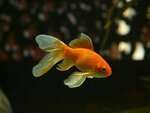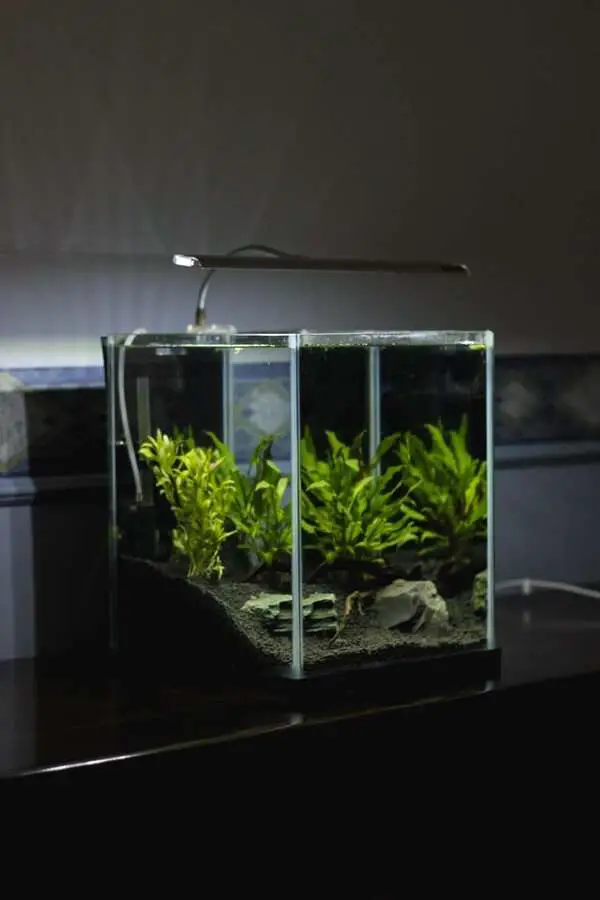A do it yourself aquarium has always been in demand, but most people don’t try it out of fear that they will end up killing all the fish. But if you do it right, it’s not as tough as you think.
More and more nature lovers and hobbyists are looking to bring the beauty of some great quality and well-stocked fish to their tanks. And of course, you have to think about the maintenance work that goes into it.
We have developed this guide to help you build the first do it yourself aquarium that you will enjoy with your family and friends. We have also answered a few questions to help you get on the way quickly.
Why Build an Aquarium?
Looking for some really good reasons as to why build a do it yourself aquarium at home? Here are a few to get you going.
- You will feel a lot closer to the fish you love the most as you will see them live their lives in your aquarium.
- It will allow you to introduce your family to the diversity that nature has as your children will get to see marine life in action, which otherwise, they might not get a chance to observe.
- You and your family can get a chance to benefit from aquarium therapy because they are great for releasing anxiety and stress.
- These aquariums need some maintenance, but it’s generally lesser than most other alternatives that will be the ultimate conversation starter whether you live in a small apartment or a large house.
- It will enable you to add some colors and vibrancy to your home, and you will feel a lot closer to nature.
How to Build a Do it Yourself Aquarium?

Want to build your aquarium at home? Building your do it yourself aquarium is simple, but you will need to have some experience under your belt to have the proper know-how to handle a project well. Here, we will provide you with a brief guide that will help you in effectively building your fish tank and just the way you have always wanted.
Set the goals that you want to achieve
When you are looking to build your do it yourself aquarium, you must go through the different types. Decide whether you want to go with a small one or is it going to contain freshwater in it, or you will go for a large saltwater tank!
It will enable you to prioritize materials and plan your tank sooner, with much more authority putting you in the right direction. It will also help you in decorating your tank and save some money. Everything will become much clearer when you visualize your tank right at the beginning.
Selecting the right type of glass
Your tank’s glass is the most integral part. Hence, you need to pick the right one to make your tank last for a long time.
Let’s say, if you are going for a simple 20-gallon tank for fresh water, you will need to go for regular plexiglass.
This glass is readily available at any construction store and is flexible yet strong enough to support around 25 gallons of water.
But for a larger tank, this glass material is not the right option because it can easily get stained as you use different chemicals to clean it. However, the good thing is that it comes in different variations, so you need to consult the seller before finalizing your purchase.
For a larger tank, stained glass is the better option. You won’t have that much flexibility, but it’s robust and thick enough to hold large volumes of water. It won’t scratch either, and you won’t have to go through a lot of maintenance all the time.
Measuring right dimensions
After choosing the right type of glass, it’s time to discuss its thickness. These aquarium glasses are categorized into three types in terms of their size. Following these ratios will allow you to pick the right type of glass according to your needs.
- 0.2-inch tall and up to 12-inch thick.
- 12 to 24-inch tall and 0.4-inch thick.
- 24 to 32-inch tall and 0.8-inch thick.
Picking the instruments
When you have decided which glass type to go for, it’s time for the assembly. And there are two ways to approach this. Either have your glass cut from a professional and, later on, assemble everything yourself. You will only have to tell them the size you need and make sure everything is right.
You need to have the right set of tools to get the job done. Make sure you don’t injure yourself. It would be better to go for a quality roller cutter or a corundum glass cutter for this purpose.
No matter what you decide to go for, you must keep a few things in your mind at all times. Your tank’s glass walls need to stand on a base and shouldn’t only be attached to the sides. It will stabilize your design even more and prevent any leaks.
The walls of any fish tank come in pairs, and you need to pick the right dimensions for each pair. Front and back walls are almost the same in dimension in most cases. Keep in mind the sidewalls always need to be shorter than the base of the tank. It will give some space to work on during assembly.
Cutting the glass

If you have decided to cut your glass, you have to take a few precautionary measures to begin with, the process. Wear your safety gear, including gloves, to ensure you don’t leave any fingerprints on the glass.
It will allow you to be safe from any cuts during the cutting process as well. Take a ruler and place it along the critical path for more accurate cuts.
You can begin by pushing the glass moderately with the cutter and moving it smoothly but don’t stop during this process. Also, keep in mind not to bang on the glass when it is about to cut away.
Firmly push it down with a single strong move confidently. You can always use a side of the table to assist you in doing exactly that.
Assembling your fish tank
When you are done with the preparation process, it’s time to assemble your tank. Align the pieces and smoothen the edges.
The first step here is to arrange and align the tank walls. The base needs to be placed right at the center. You need to put a piece of paper or foil underneath it to avoid making any messes.
Always use sandpaper for smoothing the edges or any irregularities that are there on the glass. Don’t aim for a perfectly polished glass surface. Instead, go for a flat base pane that can hold the sidewalls in place.
Cleaning the glass surfaces
After that, make the glass top thoroughly clean with sanitizer wipes. You can easily soak regular paper wipes in alcohol and clean your glass. Focus on the edges because even dirt and dust can cause the seal to detach here.
Before sealing the wall to the tank, you need to place duct tape right around the tank’s edges for avoiding the silicone sticking on the glass itself. You will be more precise in your application this way because it will act as a guiding path.
Join everything now
Now joining everything together but keep in mind not to apply silicone to all the edges and sides at the same time. Make sure to deal with one side first and then with the next one. This way, correcting any mistakes will be a little easier.
Gun dispensers can be helpful here, and you can make a thin line with them right along the edges of the two walls you are looking to join. And before applying it to the glass, you can practice with the gun to ensure you use suitable silicon on the surfaces.
Carefully lift the glass up
Because you have your first piece ready to lift and go in place, it will seem a bit unstable because it doesn’t have any support. You can always push something right next to it to make it more stable for support purposes.
And then join the rest of the pieces if you have got some silicone on the glass’s surface that has to be clean. Scrape it off with a scraper and carry it on. When you are completely done, it’s time to remove the duct if needed; clean your glass.
Allow the silicon to dry and harden. The time required here depends strictly on the type of silicone you are using. For that, you will need to check the instructions given on the bottle you have used.
It would be better to apply some duct tape on the glass’s edges to let the silicone dry because the tape will hold the tank in place.
In the end, remove all the tape and excessive silicon where it is not connected using a scraper. Just leave it for a day or two to make sure that desired results are achieved.
What are the Popular Fish to Fill Your Aquarium?
You might be thinking, what are some popular fish that you can keep in your tank? Some of the most popular fish you can use in your tank are:
● Neon Tetra

Neon tetras are the most popular fish to have in your aquarium, particularly if you are going for a freshwater fish tank. It’s a small fish, and taking care of it is quite straightforward. It is best for new fish tank owners. They don’t grow too long and are a very calm species.
● Guppies
For beginners, guppies are another popular fish that doesn’t need much care. They can breed with one another quite quickly if you don’t have separate genders. They are available in different colors too and are peaceful.
● Bettas

These are also called Siamese fighting fish and come in different colors. In most cases, they are pretty peaceful too. But these fish are very territorial, especially males. It would be better to go with these fish if you have larger tanks.
● Mollies
Mollies are easygoing and small and are best for freshwater tanks. They can grow up to 3 to 4 inches long and are omnivorous. And they also love to breed fast.
● Goldfish

These fish are very beautiful and can grow up to 14 inches in length. These are known to live more than 25 years and best for tanks at least 20 gallons in size. These fish are also available in different colors and sizes.
How to Take Care of Your Aquarium?

Thinking about the care and maintenance of your tank? There are various steps you need to take care of for proper maintenance of your tank.
- Ensure you properly condition your water regularly because it’s just not about adding tap water to your tank.
- The filtration system, if your tank needs to be in place and should be working properly because the tank shouldn’t have all the organic matter messing up the tank’s looks.
- Replenishing the minerals in your tank water is essential too. With time, they will fade away in your tank, and your fish will become sick. Your tank will have a healthy ecosystem for the fish to thrive in.
- Proper temperature maintenance is key because most freshwater fish are highly temperature-sensitive. Keep monitoring the temperature of your tank regularly. For this, you will need to install a heater.
Common Mistakes
Want to avoid some common mistakes? Here are some common mistakes that you will have to deal with; owning a fish tank.
- Leaks are common, and you might have to deal with them quite frequently. If you find any leakages, empty the tank, and seal the crevice from the outside.
- Keep the mineral content in your tank suitable for the same size, and don’t overdo it.
- Also, maintain the temperature of your tank properly, or your fish will start to misbehave significantly. Some of them might die on you out of nowhere.
- Only go for the fish that are suitable for your tank size. If you go for the fish that can quickly outgrow your tank, you will have them start to misbehave a lot.
It’s always to do some proper research before you select the species for your tank. And make sure to research according to the size of your tank because the most common issues that owners face are related to the tank size and the species that don’t get along too well.
FAQ
Is it cheaper to build your aquarium?
Yes, it’s a lot cheaper to build your aquarium. Assembled tanks include the cost to put them together, and you won’t have to pay for them when you are making one on your own.
What can you use instead of a fish tank?
If you don’t want to keep fish in your tank, you can go for Axolotl, referred to as walking fish, but it is a salamander type. You can go for a stinkpot musk tortoise or make a plant-based aquarium or a reef aquarium. Lobsters, crayfish, or shrimp are good alternatives as well.
What kind of glass should I use to build an aquarium?
Tempered glass is the best option to choose for the base of your do it yourself aquarium. For the walls, you should go for plate glass. Regular and low-iron glass is also available. For smaller tanks, Plexiglass is a good choice.
How do I make my aquarium glass crystal clear?
Filtration is important for keeping your glass clean. You can also add some bacteria to keep the glass clean. Regular water changes are necessary, and you can also use water cleaners regularly.
Are glass or acrylic aquariums better?
Acrylic aquariums are much lighter, but they scratch relatively easily. Acrylic aquariums are available in different shapes and sizes, but there are not many available in glass. However, glass has low impact resistivity, but acrylic is much better in this area. If you can keep your tank out if reached from kids or pets in your home, acrylic is a better choice.
How long do acrylic fish tanks last?
These tanks can last anywhere from 5 to 15 years, but you need to take care of them and maintain it properly.
Conclusion
Building your do it yourself aquarium is a lot of fun. You can customize it in different ways, and it will allow you to save some money. Just make sure to go for the right kind of fish and do your research properly before executing your plans. This way, you will reduce most of the mistakes and derive a lot out of your efforts.


